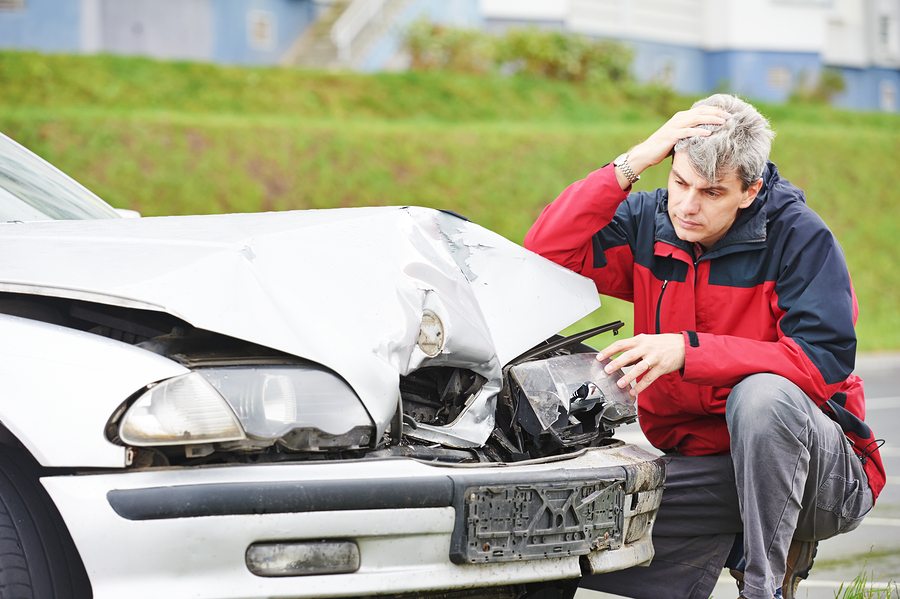The CDC claims that “seat belts reduce serious crash-related injuries and deaths by about half.” However, this statement is based on a study that was conducted by the National Highway Traffic Safety Administration (NHTSA) more than 30 years ago, in 1984. Is it still true today, over three decades later? In this article, Philadelphia car accident lawyer Brent Wieand will examine recent government crash data from Pennsylvania and New Jersey to determine whether the CDC’s claim holds up against contemporary accident statistics.
The New Jersey State Police (NJSP) publishes an annual report on fatal car accidents throughout the state. According to the 2013 NJSP report, a total of 508 collisions resulted in 542 fatalities, accounting for about 1.65% of the 32,850 auto accident deaths in the U.S. that year.
The NJSP report examined many different factors which were present in or contributed to crashes and collisions. One of these factors was the use of safety equipment, such as helmets, air bags, and seat belts. While this portion of the report unfortunately did not include data on the use of seat belts alone, it did include data on the combined use of seatbelts and airbags. A total of 127 drivers who used this combination survived, while 100 were killed, which indicates that using this gear increased the odds of surviving a serious accident. When drivers did not use any safety equipment, only 17 survived, while 44 – about two and a half times as many – were killed.

In Pennsylvania, statistical findings were similar. According to a PennDOT accident report, in 2014 a total of 1,195 people were killed in automotive accidents throughout the state, accounting for 3.7% of the 32,719 car crash deaths which occurred nationwide that year. Just over 48% of all people who died in Pennsylvania auto accidents were not wearing their seat belts, a figure which aligns with the NHTSA findings from 1984. Seat belts were used in about 38% of fatal crashes, while usage was unknown for the remaining 14% of fatal crashes. PennDOT calculated that “201 people would have survived if they had worn their belts,” a number which equates to roughly 17 fewer deaths per month.
While the figures differ from state to state, the takeaway message for drivers (and passengers) is the same: wearing a seat belt does significantly reduce the risk of dying in a serious crash or collision. The NHTSA report may be aging, much of the information contained therein remains accurate today.
In Pennsylvania, anyone who is driving or sitting in the front seat is required to wear a seat belt, regardless of age. Additionally, any passenger or driver between the ages of eight and 18 years old must be wearing at a seat belt at all times, regardless of whether they are riding in the front seat or back seat of the vehicle, as a car accident lawyer in Philadelphia, PA knows.
These laws come from 75 Pa. Cons. Stat. § 4581, which requires “any person who is operating a passenger car” to securely fasten child passengers into a booster seat or other child restraint system. While the statute provides that “each driver and front seat occupant of a passenger car… shall wear a properly adjusted and fastened safety seat belt system,” there is an exception for the drivers and front-seat occupants of cars made before 1966, since vehicles from that era – when the hazards of riding without a seat belt weren’t understood as well as they are today – often lack restraints.
Some of Pennsylvania’s seat belt laws are subject to primary enforcement (which means an officer can stop you for the offense), while others are subject to secondary enforcement (which means an officer cannot stop you for the offense, but can cite you if you are pulled over for a primary offense). For instance, it is a primary offense not to wear a seat belt if you are a driver or front seat occupant. PennDOT publishes a full list of primary and secondary seat belt offenses in Pennsylvania.
New Jersey recently updated its seat belt law pertaining to toddlers and children. As of September 1, 2015, new legislation amending P.L.1983, c.128, P.L.2001, c.244, and P.L.1984, c.179 requires a five-point harness for all children:
Otherwise, the new law requires any child over eight years old (or taller than 57 inches, regardless of age) to wear a seat belt, regardless of where they are seated in the vehicle.

Under N.J.S.A. § 39:3-76.2f, New Jersey also requires all drivers, front-seat passengers, and persons under 18 years old to wear a seat belt. Failure to comply with this law is a primary offense. Failure of a back-seat passenger to wear a seat belt is a secondary offense, regardless of age, as a Philadelphia car accident lawyer can explain.
If you were injured in a car accident in Pennsylvania or New Jersey, personal injury attorney Brent Wieand may be able to help you get compensated for your medical bills, lost earnings, and other expenses. To set up a free, confidential, no-obligation consultation with Brent, call (888) 789-3161 today. Brent also handles injuries caused by defective seat belts and other defective auto products.
***Disclaimer: This article is for informational purposes. It is not legal advice and should not be used as legal advice.***